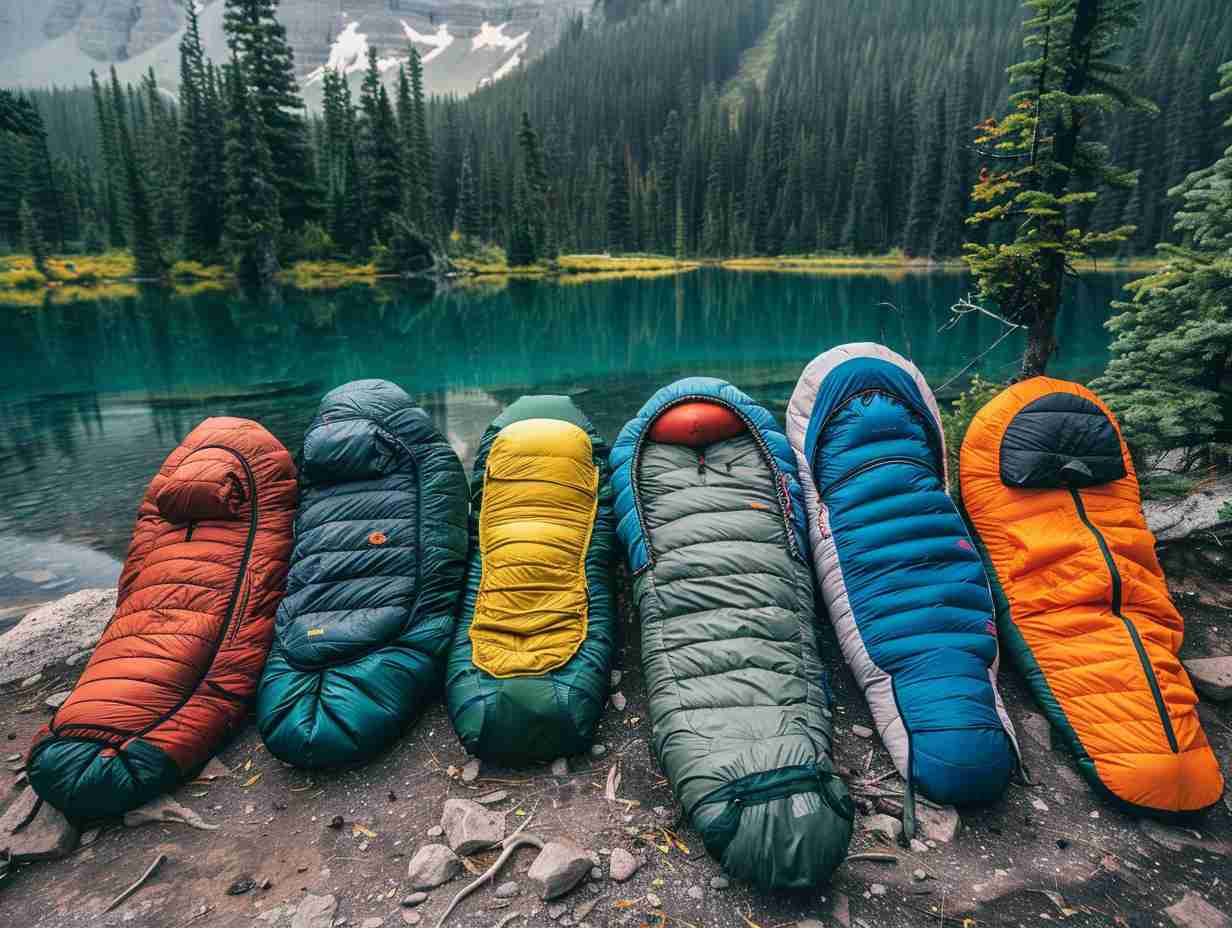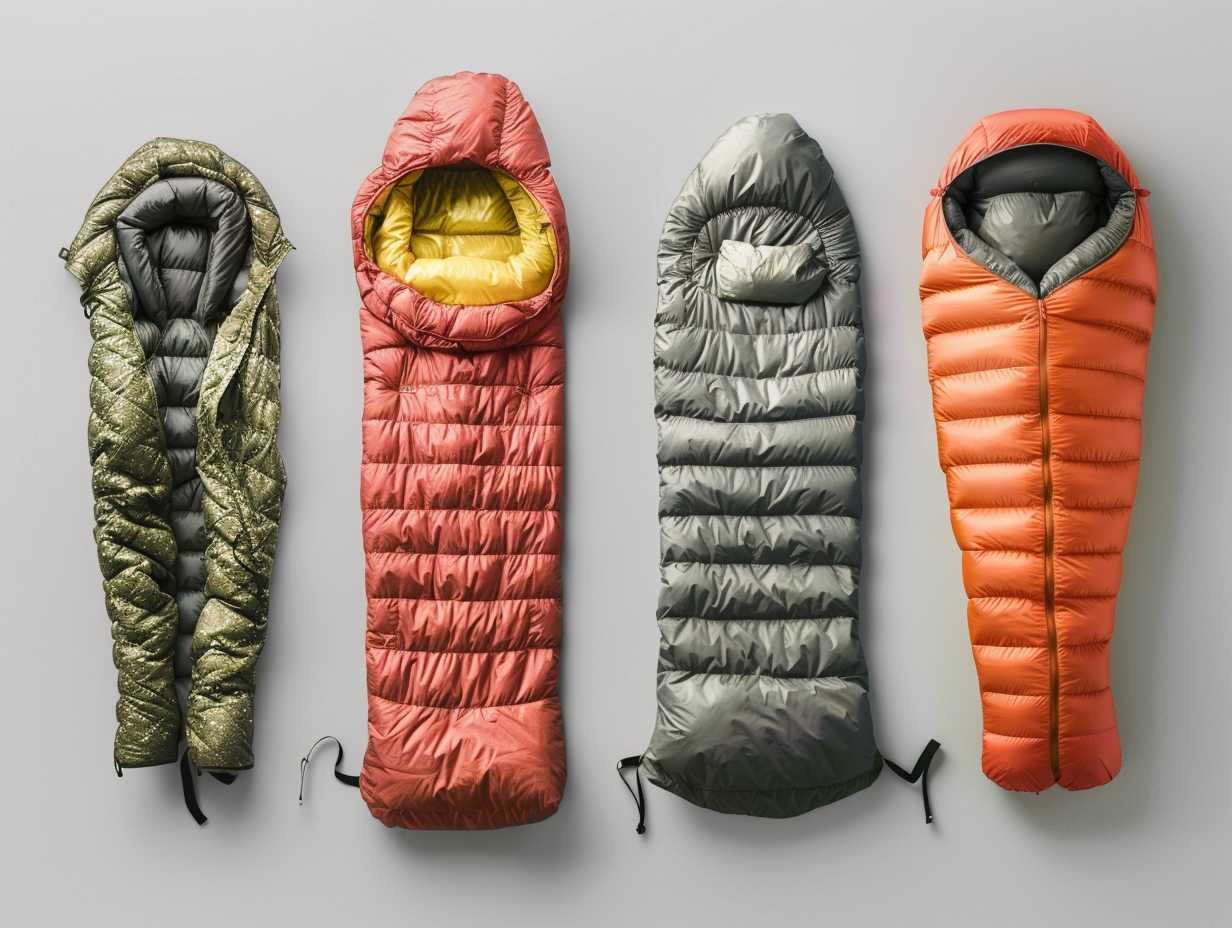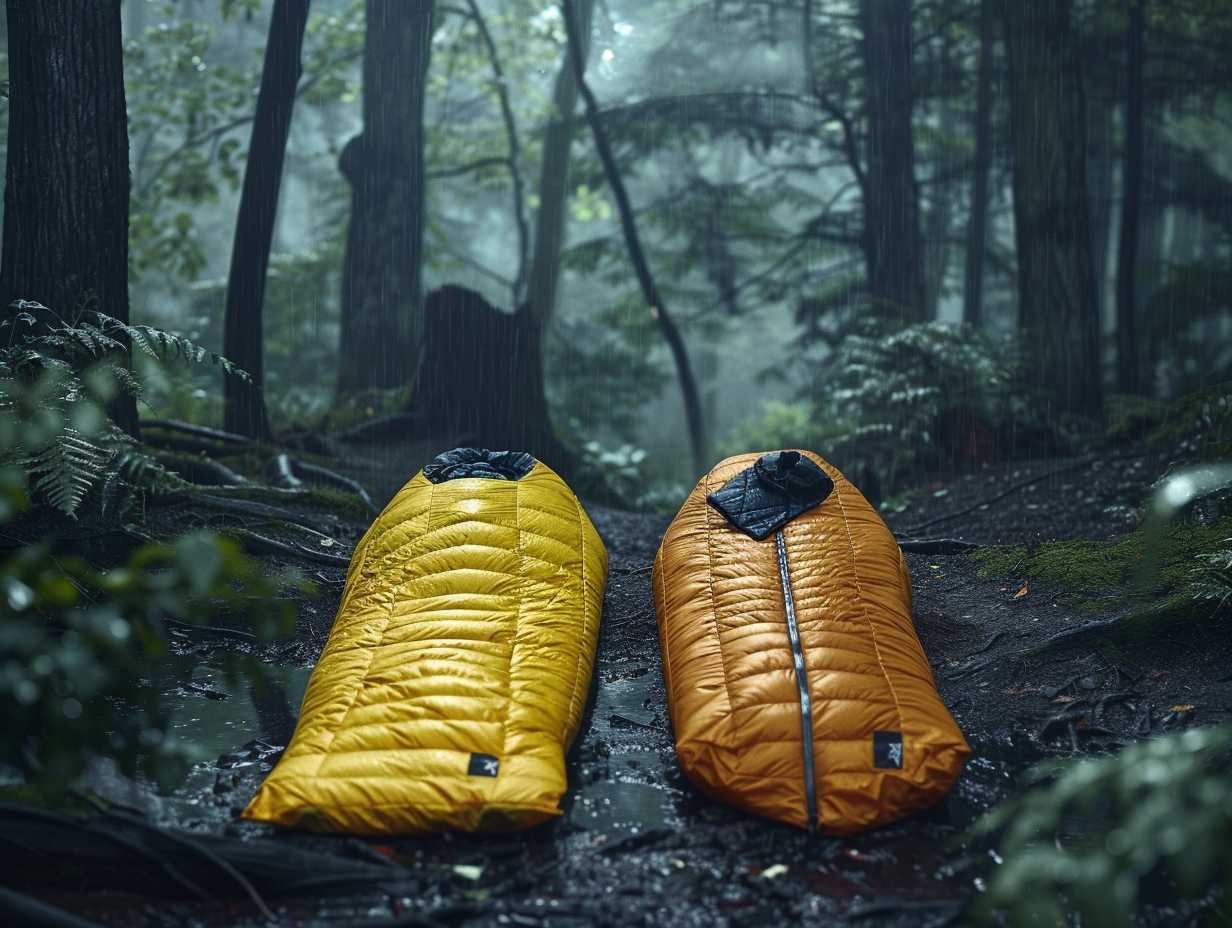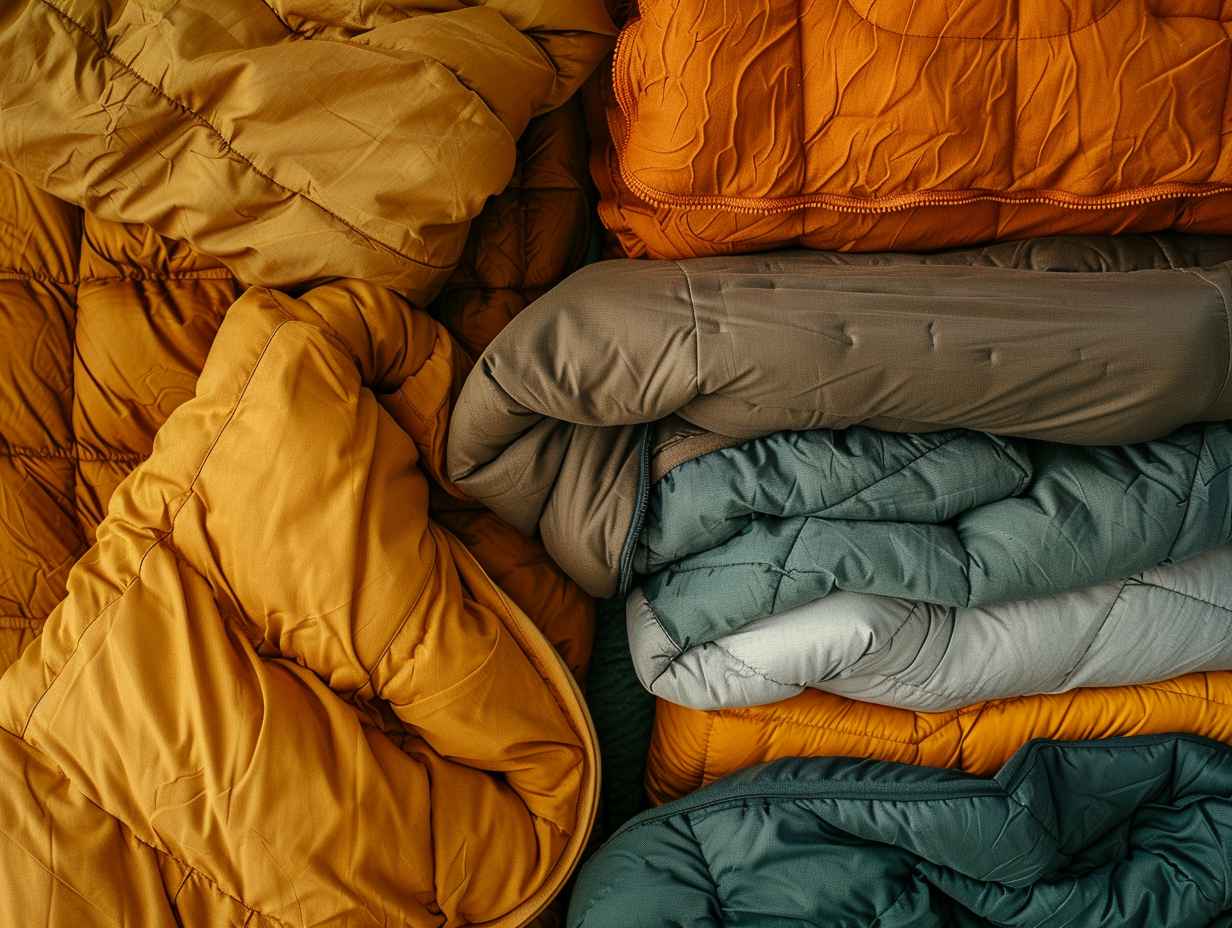
Sleeping Bags and Insulation

You might not be aware that the type of insulation in your sleeping bag can have a substantial impact on your outdoor experience. Have you ever wondered why some sleeping bags are better at keeping you warm than others? Understanding the nuances between down and synthetic insulation could be the key to choosing the perfect sleeping bag for your next adventure. The insulation choice can affect warmth, weight, durability, and even eco-friendliness. Stay tuned to uncover the essential factors to keep in mind when selecting the ideal sleeping bag insulation for your needs.
Key Takeaways
- Down insulation offers superior warmth-to-weight ratio and compressibility.
- Synthetic insulation retains warmth when wet and dries quickly.
- Down insulation is lightweight and packable but loses insulation when wet.
- Understanding differences helps in choosing the right sleeping bag insulation.
- Down is ideal for weight savings, while synthetic is practical for wet conditions.
Types of Sleeping Bag Insulation
When selecting a sleeping bag, carefully consider the insulation type to guarantee maximum warmth and comfort. Insulation is vital for providing insulation from the cold and ensuring a good night’s sleep in various conditions.
Down insulation, made from the soft undercoating of waterfowl, offers excellent warmth-to-weight ratio and compressibility. On the other hand, synthetic insulation, typically made of polyester fibers, retains warmth even when wet and dries quickly.
Consider your needs: down is lightweight and packable but may lose insulation properties when wet, while synthetic insulation is more affordable and hypoallergenic. Understanding these differences will help you choose the right sleeping bag for your outdoor adventures.
Down Insulation Vs. Synthetic Insulation

Comparing down insulation to synthetic insulation reveals distinct advantages and considerations for selecting the most suitable option for your outdoor needs.
Down insulation is known for its excellent warmth-to-weight ratio, providing exceptional warmth without adding bulk to your gear.
On the other hand, synthetic insulation offers better moisture resistance, retaining warmth even when wet, unlike down which loses its insulating properties when damp.
Additionally, synthetic insulation tends to dry faster than down, making it a practical choice for wet environments where maintaining warmth is essential.
-
Down insulation has a superior warmth-to-weight ratio.
-
Synthetic insulation provides better moisture resistance.
-
Synthetic insulation dries faster than down insulation.
Warmth-to-Weight Ratio Comparison
Exploring the warmth-to-weight ratio comparison between down insulation and synthetic insulation sheds light on their respective efficiency in providing insulation for outdoor activities.
Down insulation, known for its exceptional warmth-to-weight ratio, offers superior warmth with less bulk compared to synthetic insulation. This makes down sleeping bags ideal for backpackers and hikers looking to minimize pack weight without sacrificing warmth.
On the other hand, synthetic insulation, while slightly heavier for the same level of warmth, performs better than down insulation when wet.
Understanding the trade-offs between the two types of insulation can help you choose the best option based on your outdoor adventures, weather conditions, and personal preferences.
Moisture Resistance and Drying Time

To fully understand the performance of down and synthetic insulation in varying conditions, consider their moisture resistance and drying time. When choosing a sleeping bag, these factors are essential to guarantee comfort and warmth during outdoor adventures.
- Moisture Resistance:
- Down insulation loses its insulating properties when wet, making it vital to keep it dry.
- Synthetic insulation retains some warmth even when damp, offering better moisture resistance compared to down.
- DWR (Durable Water Repellent) treatments on the outer fabric can help repel moisture to some extent.
- Drying Time:
- Synthetic insulation dries faster than down, making it a more convenient option in wet conditions.
- Down requires more time and effort to dry thoroughly, which can be challenging in humid environments.
- Proper airing and drying techniques are crucial to maintain the performance of both types of insulation.
Durability and Longevity Factors
Consider the wear and tear your sleeping bag may encounter to assess its durability and longevity. Look for sleeping bags made with durable materials like ripstop nylon or polyester to withstand rough conditions. Reinforced stitching and high-quality zippers are essential for longevity, preventing tears and snags that could compromise insulation.
Regularly clean your sleeping bag according to the manufacturer’s instructions to maintain its loft and warmth over time. Store your sleeping bag uncompressed in a cool, dry place to prevent damage from mold or mildew.
Eco-Friendly Insulation Options

To ensure you’re making environmentally-conscious choices, exploring eco-friendly insulation options for your sleeping bag is paramount. Here are three eco-friendly insulation options worth exploring:
-
Recycled Materials: Look for sleeping bags insulated with recycled materials such as recycled polyester or down. These options help reduce waste and minimize the environmental impact of manufacturing new materials.
-
Plant-Based Insulation: Ponder sleeping bags filled with plant-based insulations like kapok or cotton. These materials are renewable, biodegradable, and require fewer resources to produce compared to traditional synthetic insulations.
-
Wool: Wool is a natural and sustainable insulator that offers excellent warmth retention. Sleeping bags incorporating wool insulation aren’t only eco-friendly but also provide great temperature regulation and moisture-wicking properties.
Frequently Asked Questions
Can Sleeping Bags Be Washed in a Regular Washing Machine?
Yes, you can wash sleeping bags in a regular washing machine. It’s important to follow the care instructions on the tag and use a gentle cycle with mild detergent. Air drying is recommended.
How Do I Store My Sleeping Bag to Maintain Its Insulation?
To maintain your sleeping bag’s insulation, store it uncompressed in a dry place, like a large cotton bag or on a hanger. Avoid long-term storage in a stuff sack. This will help preserve the loft and warmth of your bag.
Are There Sleeping Bags Specifically for Extreme Cold Conditions?
Ever braved the biting cold and wished for a snug retreat? Yes, sleeping bags designed for extreme cold exist. These specialized bags offer enhanced insulation and features to keep you warm and comfortable in frigid conditions.
Can Sleeping Bag Insulation Be Repaired if Damaged?
Yes, you can repair damaged sleeping bag insulation by patching or replacing the affected material. It is crucial to address any tears or holes promptly to maintain the bag’s warmth and effectiveness during your outdoor adventures.
Do Sleeping Bags With Eco-Friendly Insulation Cost More Than Traditional Ones?
When it comes to eco-friendly insulation, you might find that sleeping bags with this feature can indeed cost a bit more than traditional ones. However, the benefits to the environment can make it worth the investment!
Conclusion
So, which type of insulation is best for your next outdoor adventure?
The answer may surprise you. Stay tuned for the final verdict on the ultimate sleeping bag insulation choice that will keep you warm, dry, and comfortable in any environment.
Don’t miss out on the key to a good night’s sleep under the stars. The decision is just around the corner.
Disclaimer: Some information is provided through AI. Users should always conduct their own research and consult with qualified professionals before making any decisions.Affiliate information declaration: We may earn revenue from the products referred on this page and participate in affiliate programs.


